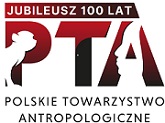Who said as the first? Morphological determinants of the human speech
DOI:
https://doi.org/10.18778/1898-6773.58.10Abstract
The evolution of human speech was probably involved into development of brain structures responsible for cultural behaviour, specially tool-making. Moreover, it has been sugested that only Homo erectus species had the speech apparatus formed the way which allowed to articulate some sounds.
Downloads
References
Aicrason J., 1995, Chimps, children, and creoles: the need for caution. In: The biology of language (ed.) S. Puppel, John Benjamins Publishing Co. Amsterdam
View in Google Scholar
Bryan L. A., 1963, The Essential Morphological Basis for Human Culture. Current Anthropology, 6
View in Google Scholar
DOI: https://doi.org/10.1086/200377
Calvin W. H., 1994, Jak powstawała inteligencja. Scient. Amer., 12
View in Google Scholar
Du Brul, 1958, Evolution of the speech apparatus, Illinois
View in Google Scholar
Hewes G. W., 1977, Language origin theories, [w:] Language Learning by a chimpanzee: the LANA Project, (ed.) D. M. Rumbaugh, New York Academic Press
View in Google Scholar
DOI: https://doi.org/10.1016/B978-0-12-601850-9.50008-7
Kevles B., 1980, Thinking Gorillas, New York Academic Press
View in Google Scholar
Krawczyński K ., 1980, Badania 'nad rozwojem krtani u noworodków. Przegląd Antropologiczny, 1
View in Google Scholar
Laitman J. T., 1984, The anatomy of human speech. Natural History, 93
View in Google Scholar
Laitman J. T., 1985, Evolution of the hominid upper respiratory tract: the fossil evidence. In: Hominid evolution: Past, Present and Future, (ed.) P. V. Tobias, New York: Liss
View in Google Scholar
Langley P., 1981, Mowa - przywilej człowieka, New Scientist, 1
View in Google Scholar
Lleberman P., E. S. Crelin , 1972, Phonetic ability and related anatomy of the newborn, adult human, Neanderthal man and the chimpanzee. Am. Anthropologist, 74
View in Google Scholar
DOI: https://doi.org/10.1525/aa.1972.74.3.02a00020
Leslie A., Ch. Dean , 1990, The anatomy of vocal tract, [w:] An introduction to human evolutionary anatomy, London
View in Google Scholar
Lestienne C., 1987, Kiedy i który z naszych przodków przemówił? New Scientist, 11
View in Google Scholar
Magriples U„ J. T. Laitman , 1987, Developmental Change in the position of the Fetal Human Larynx, Am. J. of Phys. Anthrop., 72
View in Google Scholar
DOI: https://doi.org/10.1002/ajpa.1330720406
Mitrynowicz-Modrzejewska A., 1963, Fizjologia i patologia głosu, słuchu i mowy. PWN
View in Google Scholar
Sasaki T. C , J. T. Laitman , E. S. Crelin , 1977, Postnatal Descend of the Epiglottis in Man, Arch. Otolaryngol., 3
View in Google Scholar
DOI: https://doi.org/10.1001/archotol.1977.00780200095011
Shrewsbury M. M., 1986, Precision holding in humans, non humans primates and Plio-Pleistocen hominids. J. Hum. Evol., 1/3.
View in Google Scholar
DOI: https://doi.org/10.1007/BF02436581
Szumska J., 1982, Zaburzenia mowy u dzieci, PWN
View in Google Scholar
Downloads
Published
How to Cite
Issue
Section
License

This work is licensed under a Creative Commons Attribution-NonCommercial-NoDerivatives 4.0 International License.








